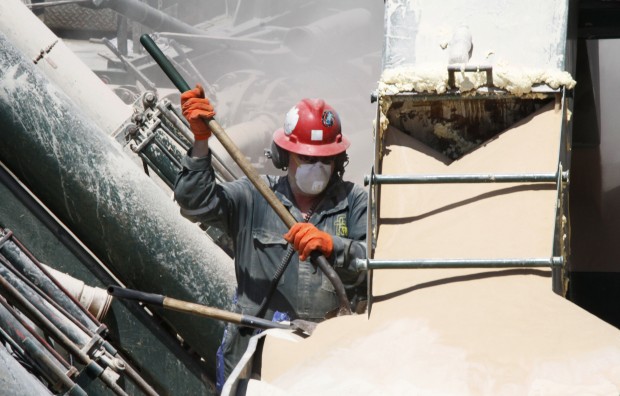Under Wolf, Pennsylvania continues publishing disputed Marcellus job figures

AP Photo/Keith Srakocic
Pennsylvania has about 30,000 direct oil and gas jobs, but the way the state publishes the jobs figures has allowed industry boosters to credit shale with supporting nearly a quarter million jobs.
Under a new administration, Pennsylvania’s Department of Labor and Industry is continuing to publish gas industry jobs figures that have been repeatedly questioned by independent economists.
Tim Kelsey is co-director of Penn State University’s Center for Economic and Community Development and spends much of his time studying the economic impact of the Marcellus Shale boom.
“I think very obviously [the state jobs figures] can be misleading, and they are misused,” he says.
After it was brought to their attention by StateImpact Pennsylvania, the Wolf administration says it is looking into the possibility of changing how the numbers are presented.
“We’re reviewing the practice and methodology involved with getting the data and reporting it,” says Wolf spokesman Jeff Sheridan.
Pennsylvania began publishing the employment numbers in 2011 in a booklet called Marcellus Shale Fast Facts under former governor Republican governor, Tom Corbett.*
The Marcellus jobs figures include six core oil and gas sectors, which employ about 30,000 people. The state also counts 30 ancillary industries, which covers sectors like trucking, engineering, and road construction. The ancillary jobs figure hovers around 200,000 people, and it captures everyone working in those industries– whether they’re connected to the gas drilling or not.
Industry boosters often combine the two numbers and credit the Marcellus Shale with supporting nearly a quarter-million jobs in Pennsylvania. Former governor Corbett used the disputed numbers in his failed re-election bid and in a state energy plan.
“We’ve always said to look at those core industries. I don’t think anyone’s argued that [30,000] number,” says Sara Goulet, a labor department spokeswoman. “But you just have to realize, we’re not able to say every job in the ancillary industries is tied to shale.”
Kelsey says the way the federal government collects employment data makes it difficult to attribute jobs to a particular industry.
“The state’s not doing something necessarily incorrect, but I think they could make it easier, so it’s less likely to be misused by others,” he says. “The caveats are buried in the footnotes. If they put those in bold and made it a bit clearer, that would help quite a bit.”
The Marcellus Shale is the only industry the state has singled out to track on a monthly basis. It does not track jobs figures in renewable energy sectors, like wind and solar.
Note: This story has been updated with a response from Governor Wolf’s spokesman
* Correction: A previous version of this story stated that the Marcellus Shale Fast Facts was first published under former Governor Ed Rendell. It began in April 2011, under Governor Tom Corbett.
















